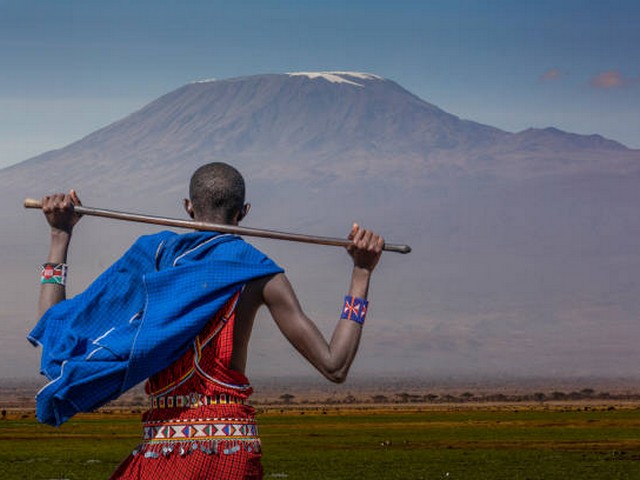Choosing The Right Sleeping Mat For Kilimanjaro: A Guide To Restful Nights Above The Clouds
When you embark on the journey to conquer the highest peak in Africa, Mount Kilimanjaro, every piece of gear plays a crucial role in your adventure. Among these, one item that often gets overlooked is the sleeping mat. Not just any sleeping mat, but the right sleeping mat can be the difference between a restful night and a restless one. At Kilimanjaro Centre for Trekking and Ecotourism (KCTE), we understand that the comfort of our climbers is paramount in making their expedition memorable and successful. Here’s why choosing the right sleeping mat for Kilimanjaro isn’t just about sleep; it’s about ensuring you have the energy to meet the dawn with enthusiasm each new day.
Why Is A Good Sleeping Mat Crucial For Kilimanjaro?
The Role of Comfort and Insulation
On Kilimanjaro, the temperatures can plummet drastically as you ascend. Your sleeping mat isn’t just a bed; it’s a critical layer of insulation. A quality mat provides a barrier between you and the cold ground, preserving your body heat and ensuring that your sleep is uninterrupted by the chill of the high-altitude nights.
Support and Recovery
After trekking for hours, your body needs proper rest and recovery. A good sleeping mat supports your body’s pressure points, helping reduce soreness and fatigue. This support is essential for you to be able to tackle each new day’s challenges refreshed and pain-free.
Choosing The Best Sleeping Mat: What To Look For
1. Type of Sleeping Mat
Air Mats: These are lightweight and compact, making them ideal for a Kilimanjaro trek where weight is a consideration. They can be inflated for a comfortable night’s sleep and deflated to save space in your pack during the day.
Foam Mats: Known for durability and insulation, foam mats are a bit bulkier. However, they are ready to use without the need for inflation and provide excellent insulation against the cold ground.
Self-Inflating Mats: A hybrid of air and foam, these mats offer both comfort and convenience. They pack small but inflate to provide a foam-like cushioning and are very effective at insulating against the cold.
2. R-Value
The R-value of a sleeping mat indicates its capacity to resist heat flow. The higher the R-value, the better the insulation. For Kilimanjaro’s varying altitudes and temperatures, a mat with an R-value of 4 or higher is recommended to keep you warm through the nights.
3. Weight and Packability
When you’re climbing Kilimanjaro, every ounce matters. Choose a mat that offers the best combination of comfort and lightweight compactness. Remember, what you carry up the mountain affects your endurance and stamina.
4. Durability
The rugged terrain of Kilimanjaro demands gear that can withstand abrasion and rough use. Look for mats made from tough materials and check user reviews for insights into how mats perform in real-world conditions.
5. Comfort
Lastly, consider the thickness and surface texture of the mat. A thicker mat usually offers better comfort, but it’s a balance between added weight and sleep quality. Choose what serves your comfort needs without excessively adding to your load.
Top Tips for Using Your Sleeping Mat on Kilimanjaro
-
Test Before You Trek: Before heading to Kilimanjaro, spend a few nights on your mat. Ensure it’s comfortable and meets your expectations.
-
Protect Your Mat: Use a groundsheet or tent footprint to protect your mat from punctures or excessive wear.
-
Optimal Inflation: Don’t overinflate your mat. A slightly softer mat will conform better to your body and provide more warmth.
-
Storage: During the trek, keep your mat in a waterproof bag to protect it from moisture. Wet gear can make nights miserable and cold.
Why Climb Kilimanjaro with KCTE?
At Kilimanjaro Centre for Trekking and Ecotourism (KCTE), we pride ourselves on providing unmatched experiences on Africa’s rooftop. Our expert guides, top-of-the-line gear recommendations, and comprehensive support ensure that every climber has the safest, most memorable adventure possible. When you book your climb with us, you’re choosing excellence.
Frequently Asked Questions
Q1: Can I rent a sleeping mat from KCTE?
A1: Yes, we offer high-quality rental gear, including sleeping mats that meet the specifications for a comfortable and warm sleep on Kilimanjaro.
Q2: How important is the sleeping mat compared to the sleeping bag?
A2: Both are equally important. While the sleeping bag provides warmth, the mat offers necessary insulation from the ground and additional comfort.
Q3: What should I do if my sleeping mat gets a puncture on the mountain?
A3: We recommend carrying a repair kit. Our guides can assist in repairing minor punctures to ensure your comfort isn’t compromised.
Q4: How do I choose between an air mat and a self-inflating mat?
A4: Consider factors like weight preference, insulation needs, and personal comfort. Air mats are lighter, while self-inflating mats offer better insulation and comfort.
Concluding Thoughts
Choosing the right sleeping mat for your Kilimanjaro trek can dramatically improve your climbing experience. Remember, good sleep is a cornerstone of performance. With the right mat under you, the stars over Kilimanjaro seem brighter, and the summit feels just within reach.
Ready to embark on this life-changing journey with the best in the business? Book your Kilimanjaro climb with Kilimanjaro Centre for Trekking and Ecotourism (KCTE) today, and step into the dream of reaching the roof of Africa, equipped for success and comfort.




